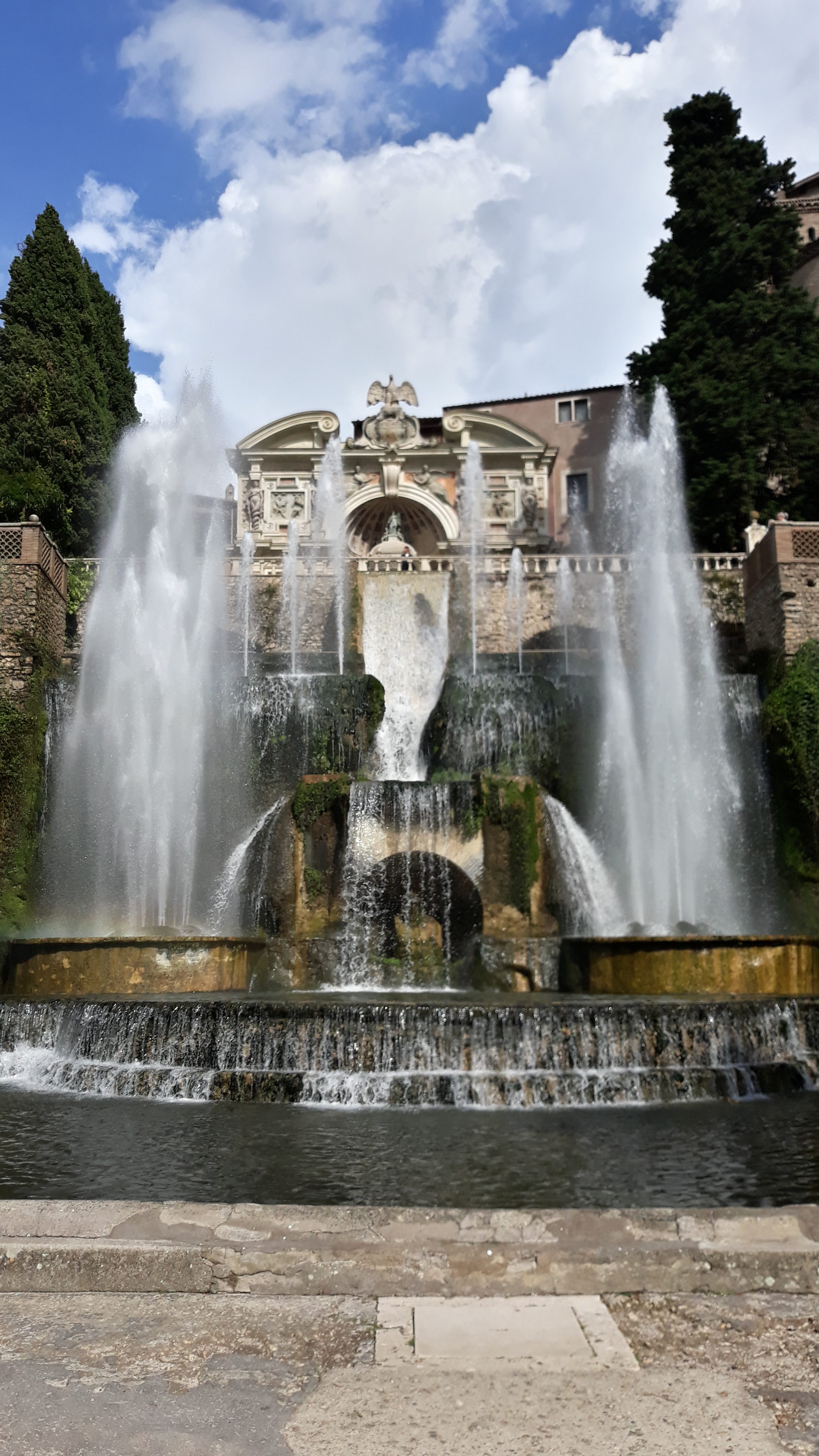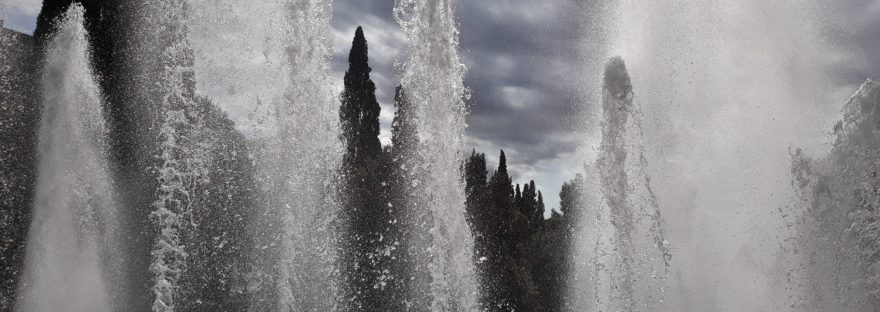From the terrace of the Organ Fountain, you can see through strong jets of water, “El Peschiere”. These are three large ponds that served to maintain a variety of fish for the consumption of the Villa d’Este. These fish tanks are located after the Fountain of Neptune. When the Fountain of Neptune and the ponds are observed from certain angles, it seems that they are interconnected, giving an impression of continuity, but this is only an optical impression.
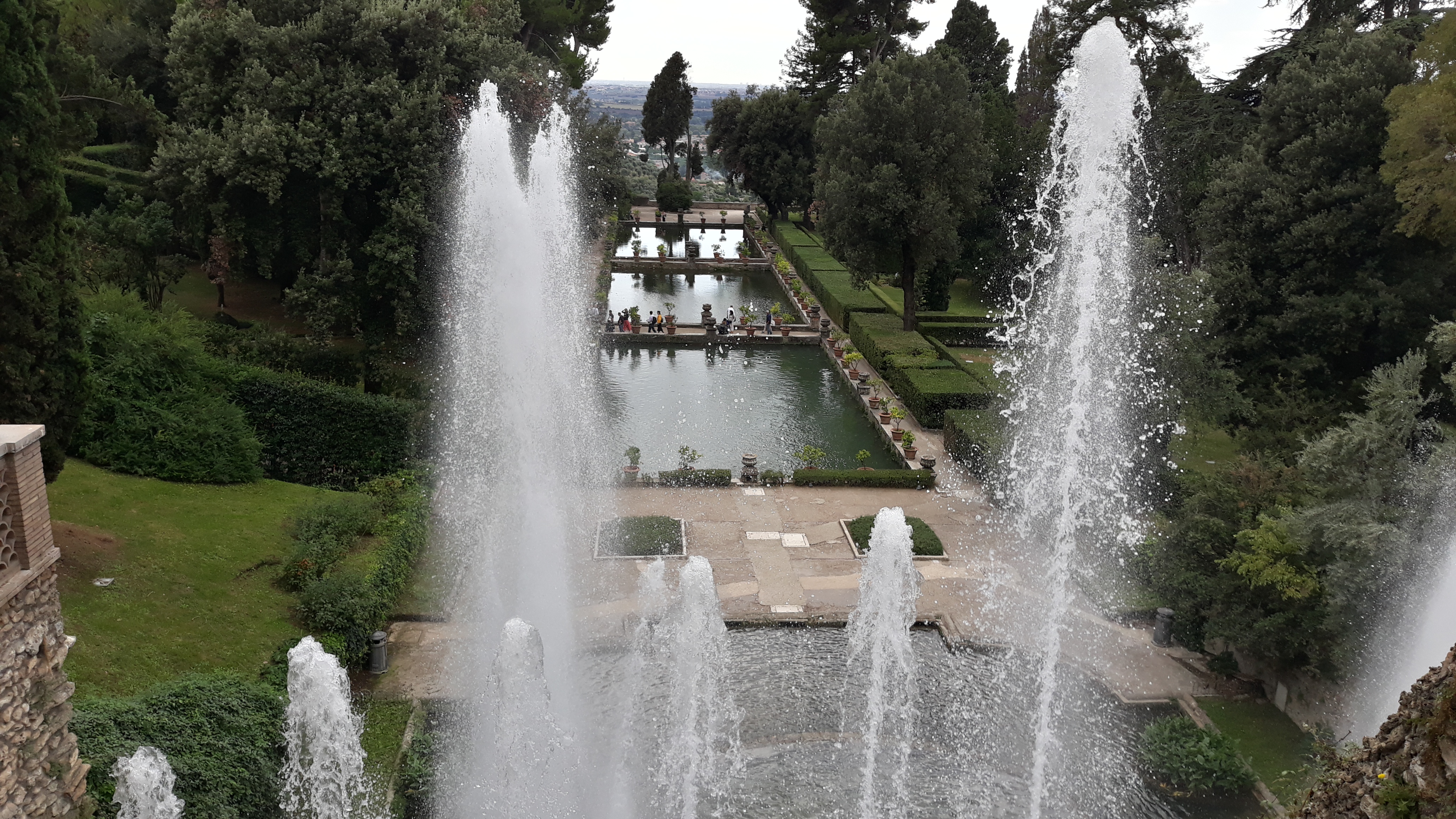
The Fountain of Neptune is considered the most important source of the Villa d’Este in Tivoli, Italy. It was built in the twentieth century, and its design is by Attilio Rossi, being Honorary Manager of Conservation of the Villa.
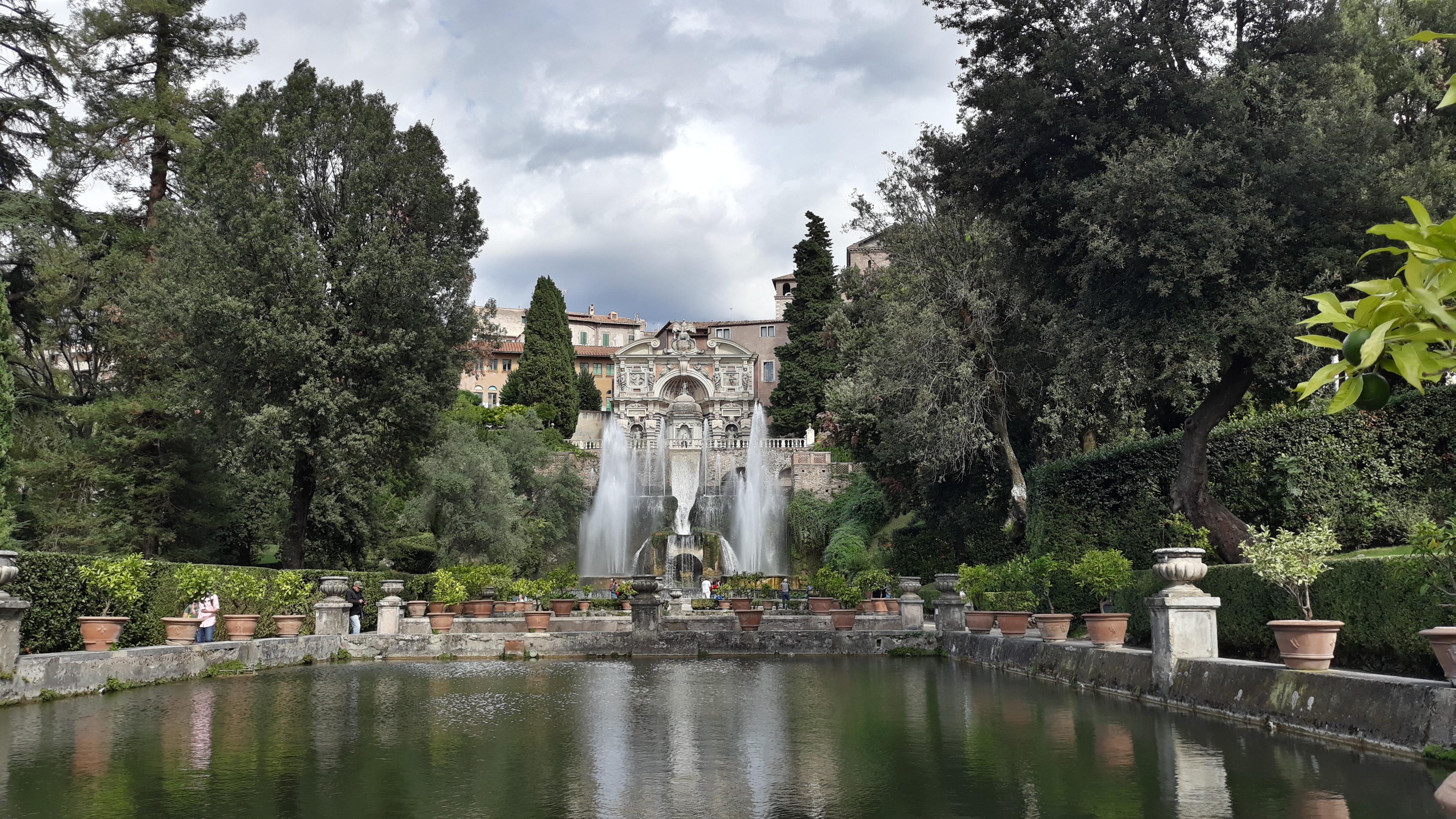
Originally and according to the plans of Pirro Ligorio, the Fountain of Neptune would be a large waterfall surging below the Fountain of the Organ. The waterfall would spread through different bowls. However, Attilio Rossi decided to introduce water jets in various styles and intensities to the source. On the sides of the main waterfall, minor jets and stronger jets from two lower bowls.
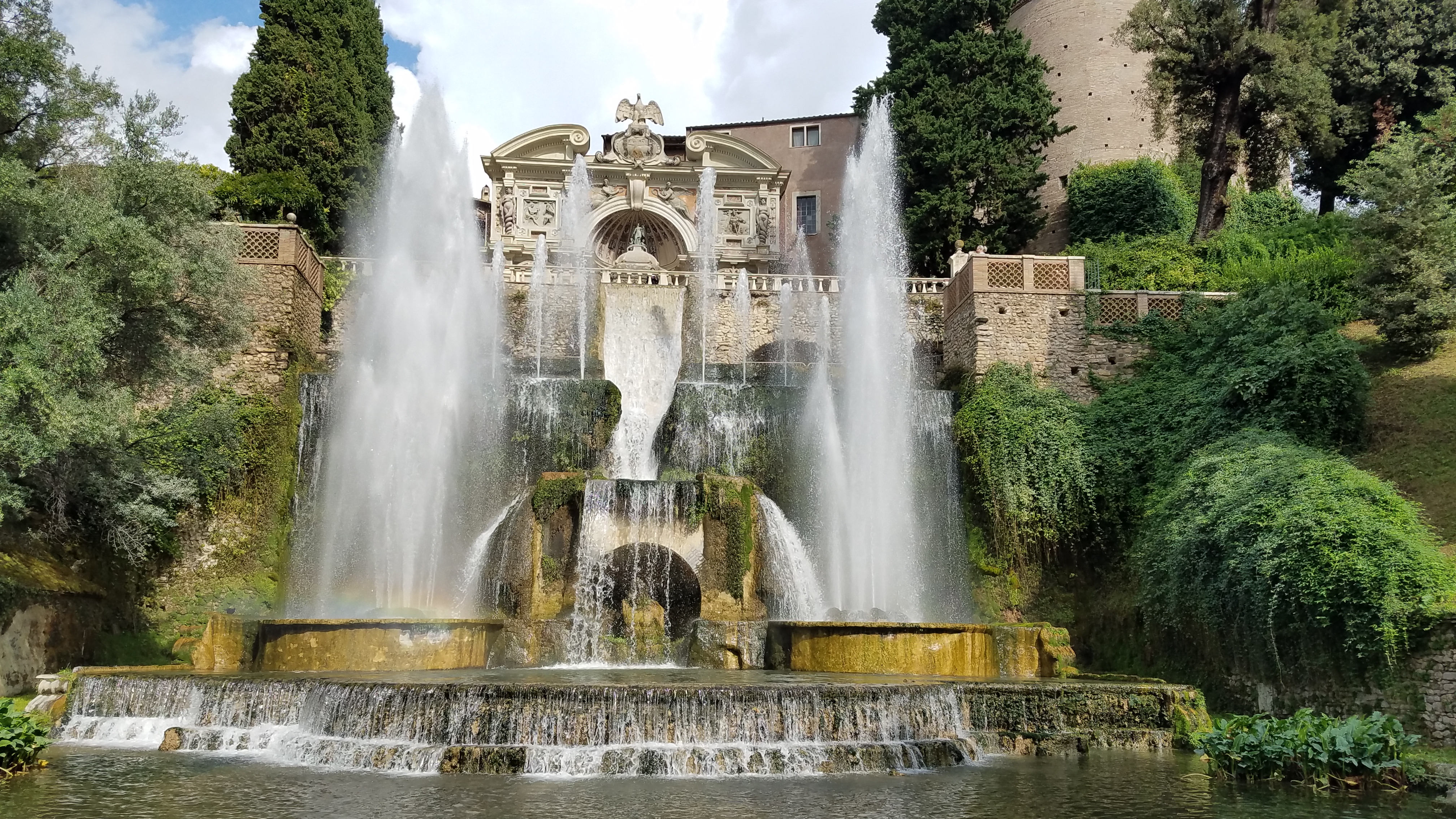
The fountain has several levels ensuring the constant cascading effect. This effect does not allow us to see what is in the central niche. Despite our research, no reference was found as to the figure that occupies that central niche. Since it is the Fountain of Neptune, perhaps it is the Sea God himself that occupies said space.
